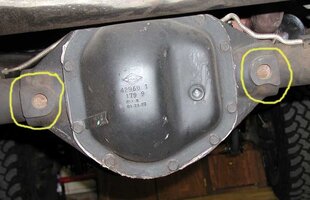Hey folks. I was looking to dial in my caster a bit last night because my steering is ok, but "light" doesn't really return to center as I would like and came away with questions vs a done task. Setting pinion angle on the rear was easy because the diff has flat spots on the back to measure the angle. I thought I remembered someone telling me there were the same kind of flat spots under the C's to check caster angle, but I did not find them. Could be I just don't know what I am looking for. What I found was a U shaped area with a depression in the middle. I could bridge the sides with the angle finder or sit it on the base of the U, both gave me about the same angle readings. Pics below.
I know I am supposed to shoot for ~ 6* but Driver side is showing 4.5 and Passenger side is showing 7.8. Thus generating a couple questions for my OCD.
1. Am I measuring in the right spot?
2. If I am measuring correctly, shouldn't these be really close to each other? Would 4* difference between the sides indicate a bent or twisted housing?
Any guidance from folks in the know is greatly appreciated.
Driver side

Passenger side

I know I am supposed to shoot for ~ 6* but Driver side is showing 4.5 and Passenger side is showing 7.8. Thus generating a couple questions for my OCD.
1. Am I measuring in the right spot?
2. If I am measuring correctly, shouldn't these be really close to each other? Would 4* difference between the sides indicate a bent or twisted housing?
Any guidance from folks in the know is greatly appreciated.
Driver side
Passenger side



